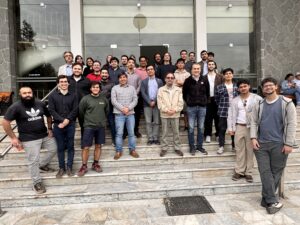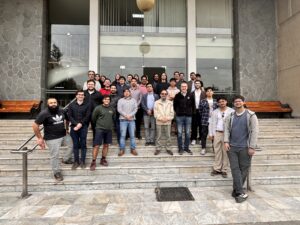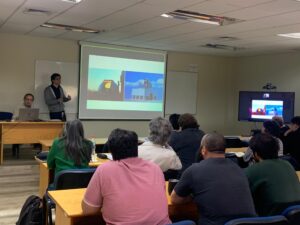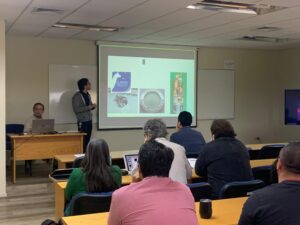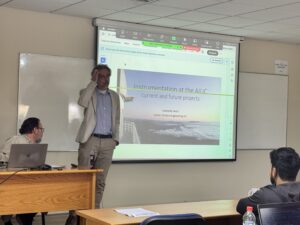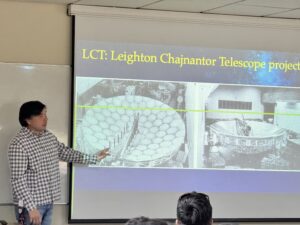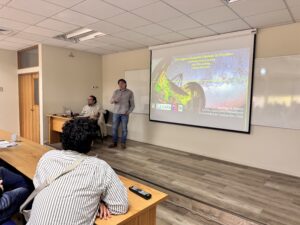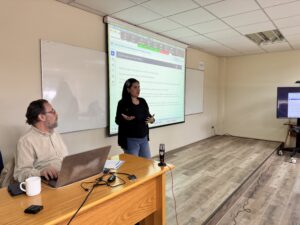
CATA strengthens its Astronomical Instrumentation area with a view to the next five years
Area 8 of Astronomical Instrumentation at our Center met at Cerro Calán to present and discuss recent advances in this field.
Researchers and engineers from the Center for Astrophysics and Asocciated Technologies – CATA (ANID Basal Center) met to share the progress made in recent years and outline the scientific, technological, and collaborative challenges that will guide the Center’s work over the next five years.
The meeting, held at the Department of Astronomy of the Universidad de Chile (Cerro Calán), brought together researchers and representatives from all the main universities and laboratories associated with CATA.
“The teams have grown significantly in all laboratories, including the new ones that have joined CATA. It was very necessary for us to meet to plan our collaborative work with a view to the next five years of implementation,” said Leonardo Bronfman, Principal Investigator at CATA and academic at the Universidad de Chile.
The researcher highlighted the conference, where different teams presented their progress on more than 30 active projects, covering optical, electronic, and software developments applied to large international observatories. Among the notable milestones in the area, Bronfman mentioned the delivery of the Band 1 optics for the ALMA telescopes by the Millimeter Wave Laboratory (MWL) at the Universidad de Chile, the progress of the LCT (Leighton Chajnantor Telescope) project at the Universidad de Concepción in collaboration with CalTech and Shanghai Normal University, and the advances of TARDyS, a high-resolution spectrograph developed by the Universidad Católica for the new TAO telescope of the University of Tokyo on Cerro Chajnantor.
“The integration of Chilean instruments into international telescopes represents a major achievement. There are currently active projects underway, and the challenge is to continue advancing their development and consolidate their contribution to CATA’s objectives,” the researcher emphasized.
Synergies between instrumentation and technology transfer
The meeting also highlighted the close link between the development of astronomical instrumentation and technology transfer (TT), areas that are advancing jointly within the Center. Rodrigo Reeves, Associate Researcher at our Center and Director of the Center for Astronomical Instrumentation (CePIA), emphasized the importance of the relationship between these two subjects.
“They develop jointly. The same laboratories that work on instrumentation are the sources of work, labor, and instrumentation for technology transfer projects. They need each other, and I think we have evolved toward an efficient interrelationship mechanism,” explained Reeves.
The researcher also highlighted the laboratories’ achievements on various fronts, such as the development of detectors for fast radio bursts (FRBs), advances in infrared optical spectrometers, and new methodologies for calibrating cameras used in the study of the cosmic microwave background.
“It is definitely world-class science and instrumentation that is being done here. Each laboratory seeks ways to better support the Technology Transfer Area by contributing technology to society and industry and looking toward new developments for the renewal period,” Reeves added.
Interdisciplinarity and international collaboration
The meeting also reinforced the importance of interdisciplinarity as a means of innovating and connecting astronomical instrumentation with other areas of knowledge. Franco Curotto, Senior Engineer and Head of the MWL Laboratory at CATA/U. Chile, addressed these issues.
“By understanding the capabilities of other laboratories, we can design and develop different applications in the transfer area. Using our capabilities and equipment, we can apply them in different areas, such as electronics manufacturing, antennas, or mechanics, as well as computational areas such as artificial intelligence and machine learning,” said the engineer.
Finalmente, destacó que la colaboración internacional continúa siendo un pilar central del trabajo del área. “Muchos de los proyectos que ya estamos ejecutando son con colaboraciones internacionales. A través de esos mismos mecanismos pueden surgir nuevos proyectos y colaboraciones con telescopios internacionales que ya están en Chile, por ejemplo, montando nuevos receptores diseñados en nuestros laboratorios”, culminó Curotto.
Recent news
-
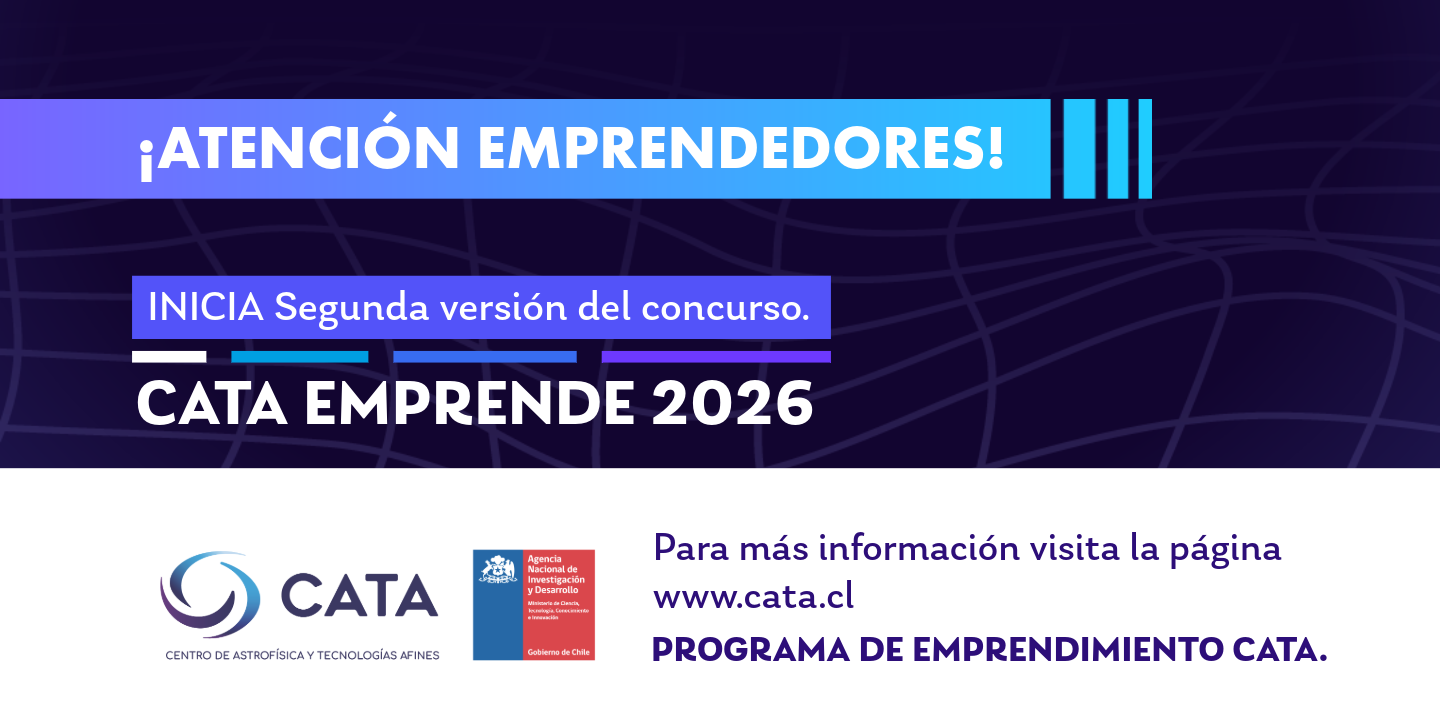 Publicado el: 12/12/2025Call for applications for the CATA Emprende 2026 program now open
Publicado el: 12/12/2025Call for applications for the CATA Emprende 2026 program now open -
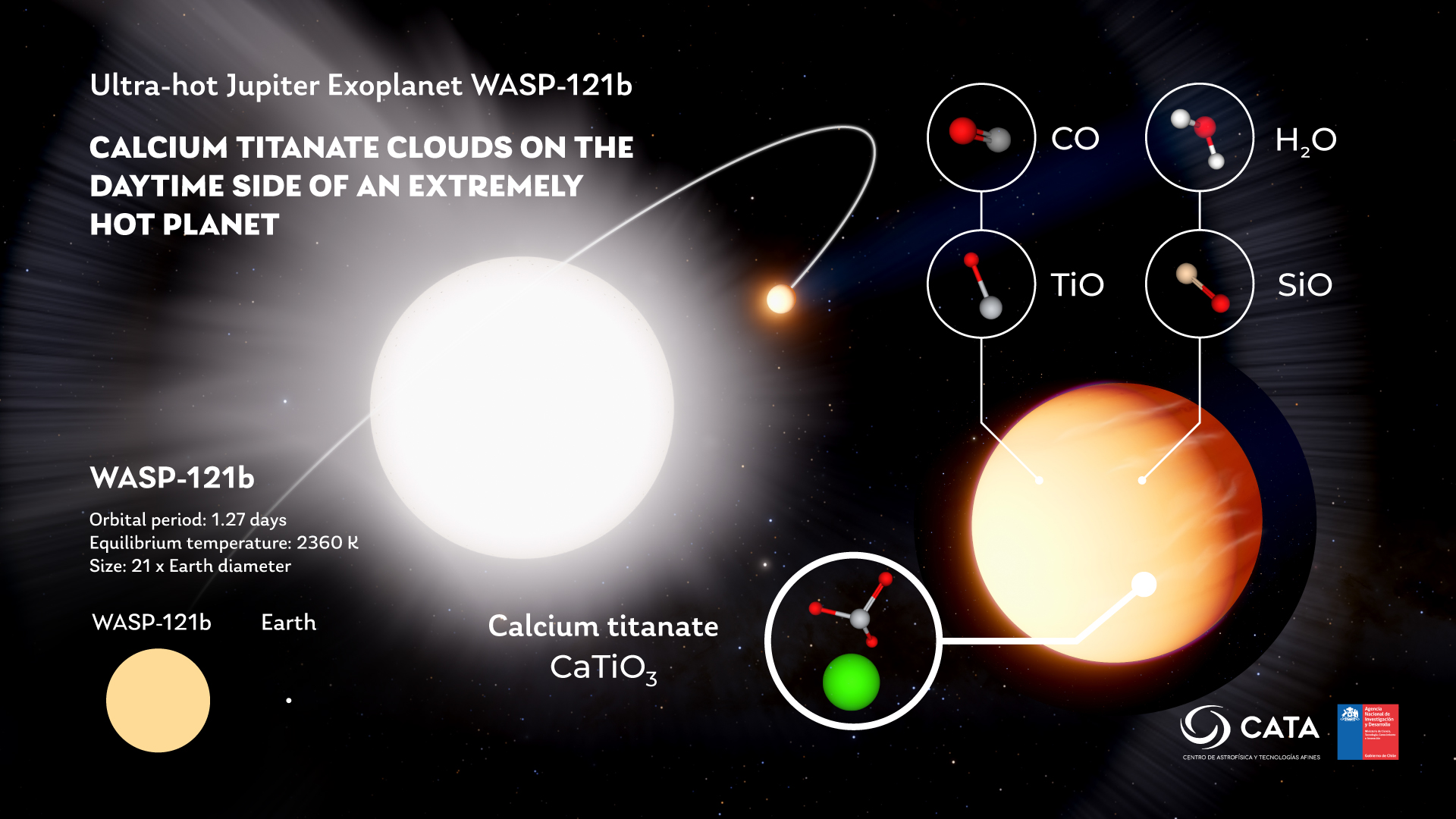 Publicado el: 09/12/2025CATA researchers detect titanate clouds on ultra-hot exoplanet
Publicado el: 09/12/2025CATA researchers detect titanate clouds on ultra-hot exoplanet -
 Publicado el: 05/12/2025CATA launches Applied Research Fund 2026
Publicado el: 05/12/2025CATA launches Applied Research Fund 2026 -
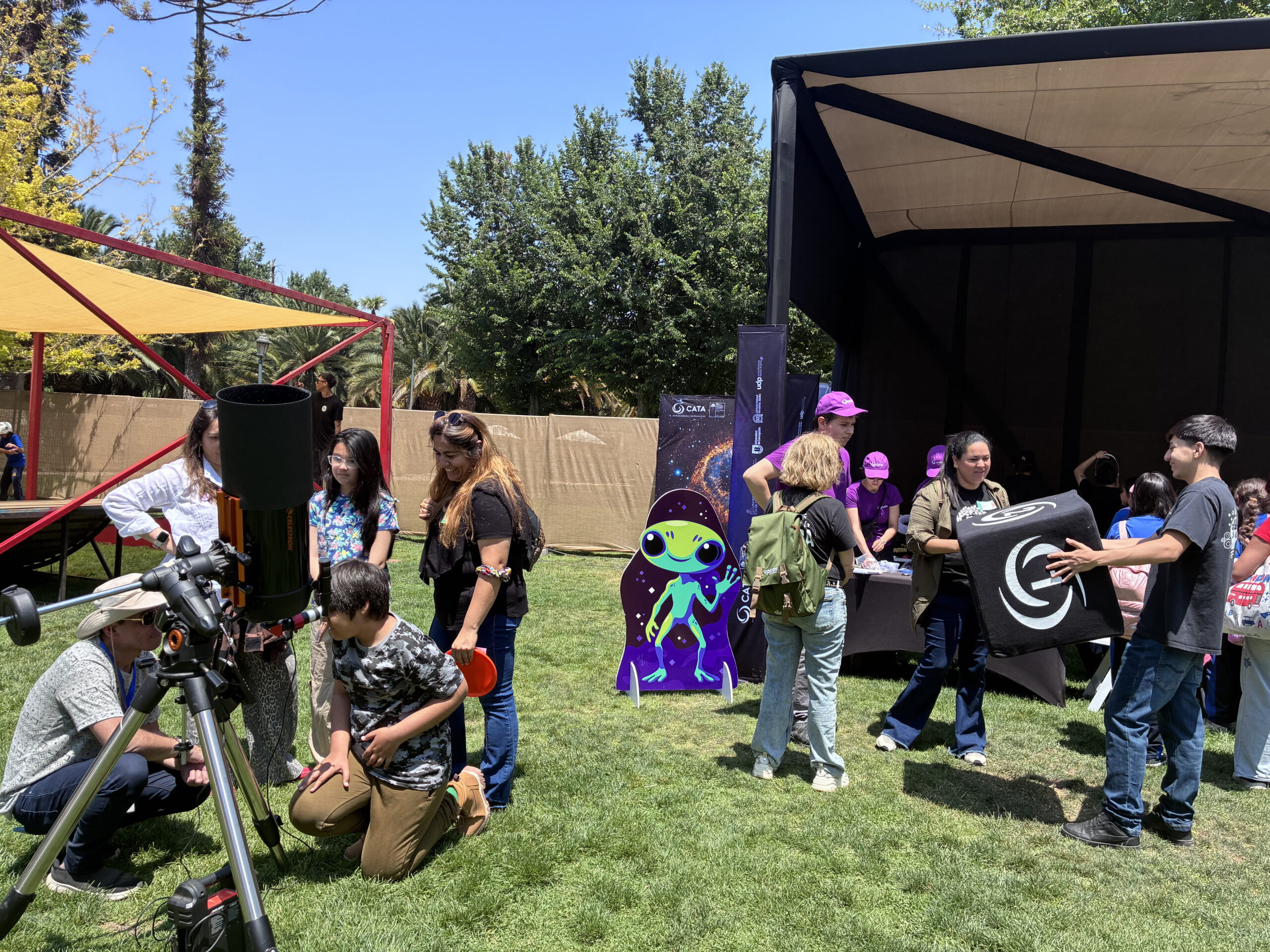 Publicado el: 01/12/2025The astronomical experience was part of the 4th Ladera Sur Festival.
Publicado el: 01/12/2025The astronomical experience was part of the 4th Ladera Sur Festival. -
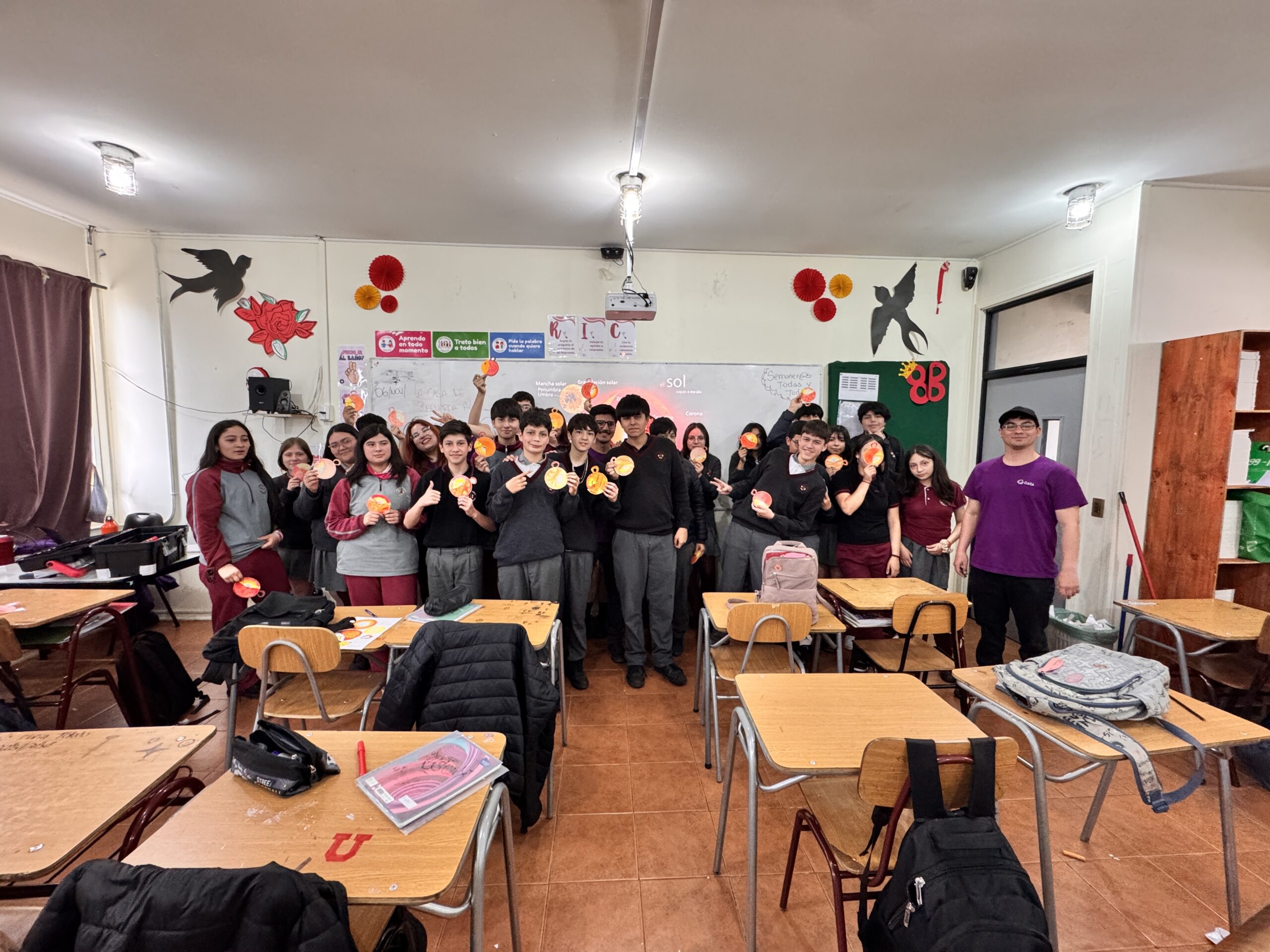 Publicado el: 25/11/2025Students from Angol held an astronomy workshop with CATA
Publicado el: 25/11/2025Students from Angol held an astronomy workshop with CATA
Categories list
- Acknowledgments 21
- Astrobiology 6
- AstroCluster 1
- Black holes 18
- Corporativo 57
- Cosmology 5
- Descubrimientos 23
- Disclosure 73
- Exoplanets 14
- Extension 6
- Galaxies 21
- Galaxies formation 5
- Inter y Transdisciplina 4
- Local Universe 16
- Publications 6
- Sin categorizar 34
- Solar System 21
- Stellar formation 8
- Technology 16
- Technology Transfer 18
